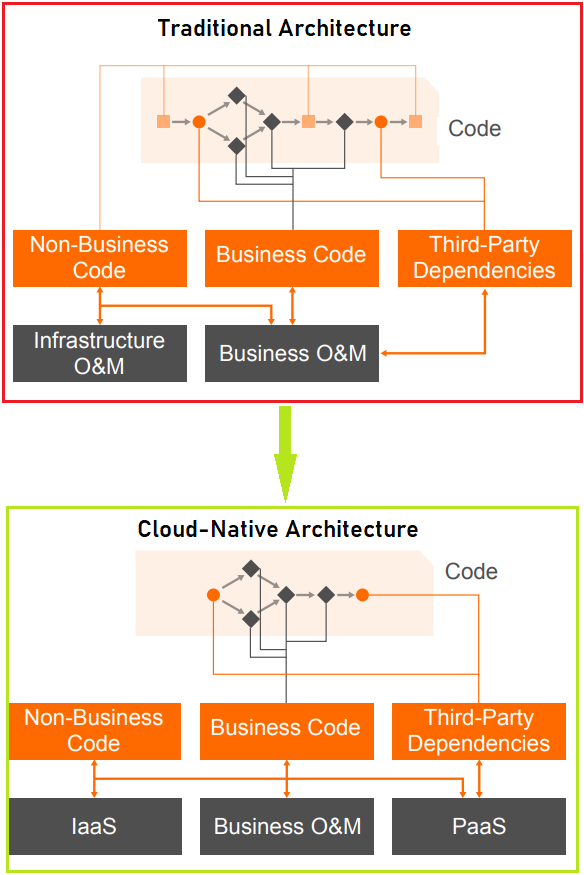By Shantanu Kaushik
There was a paradigm shift over the past decade with enterprises undergoing rigorous Digital Transformation scenarios. New business models and advanced practices have redefined the growth cycle that was anticipated during the past decade. Enterprises can expand into areas that were untapped previously. This rapid acceleration has identified a lot of new opportunities but has also unearthed new challenges.
Cloud computing has reached new heights in terms of infrastructure and organizations adopting the cloud model rapidly. Organizations that have been in the cloud computing zone have increased their investments into technological advancements through the multi-cloud model and hybrid cloud setups. The evolution of open-source projects has brought a great deal of opportunity, scalability, and enthusiasm.
The rapid development cycles have created more technologies to help set technical standards and set up a rugged ecosystem to support and help the cloud computing models to evolve efficiently. Cloud-native technologies and solutions have enabled the developers to achieve an unhinged focus on innovation to enable the organizations to achieve faster growth cycles and better productivity rates.
Enterprises have to consider migrating to the cloud if they want to stay ahead of the competition. Cloud computing has benefitted the whole IT sector and provided fast-paced growth opportunities to enterprises. When it comes to revolutionary services, containers lead the pack. Containers are the prime movers in cloud computing evolution. They work with cloud-native tech to help with rapid global expansion scenarios for enterprises. Cloud-native has reshaped the software tech-stack and introduced better tools and practices to upgrade the cloud computing model to a more-advanced cloud-native architecture.
Cloud-native is an architecture derived from the core of cloud computing architecture. The code is isolated and distributed with business and non-business code to make the architecture more elastic and scalable. The feature set associated with non-business code is used within the infrastructure, and any third-party dependencies are handled using Platform as a Service (PaaS) solutions. This makes cloud-native highly scalable, automated, and agile.
The main focus is on the code that handles core business features since it works to drive value out of the solution. The non-business code is what accounts for auxiliary systems like security, redundancies, and monitoring. The cloud-native architecture can deliver more value in less time by distributing workflows.
Cloud-native is the answer to the question of, “How to build a successful cloud practice in the coming years?” The next decade will showcase an application development accelerated cycle where cloud computing services become more standardized, customizable, and accessible. The new normal and the economic slowdown will demand an added edge from solutions to recover from the present situation.
However, the stats already paint a picture where organizations are willing to invest more into cloud-native to enable evolutionary digital transformation. Along the way, IT architecture is expected to merge and reemerge as cloud-native architecture. Cloud-native suggests a far superior application and solutions as all the stakeholders (developers, operators, strategists, architects, and administrators) come together to form a more efficient workflow.
Along with business requirements, the application requirements have also changed. Organizations have moved their focus from the traditional approach towards a more digitized one. More services are migrating to a digital channel to maximize user experience and counter any competition affecting the business value of an organization.
These modern-day requirements need to be met. Enterprises need a way to update their technology stack and maintain their core business values. This creates a need for an architecture that can support and comprehend the changing nature of businesses and application requirements.
Business pipelines have reshaped themselves to accommodate the requirements uprising from the industry. An abundance of digital services has led to a major shift in how accelerated your business pipeline can be and how you can extract revenue from it seamlessly.

CIOs faced the challenge of assembling all the teams to work together. Team isolation due to traditional hardware resource allocation methods bridged the gaps using middleware software. This architecture was resource-hungry and made collaboration more challenging.
Cloud computing was the answer to this challenge. Alibaba Cloud Infrastructure as a Service (IaaS) enabled enterprises to deploy using a reusable infrastructure with scalability. Virtual resources can be implemented using Auto Scaling to adjust the infrastructure based on the traffic load.
Cloud-native has bridged the gap that traditional IDCs faced due to resource isolation between teams. The reusability with cloud-native presents impeccable resource usage to enable a more unified architecture that promotes collaboration. DevOps and DataOps collaboration is important.
Cloud-native presents a more agile, customizable, flexible, secure, and scalable architecture to build on the roots of cloud computing and provide a base for structured growth for the next set of upgrades.
In Part 2 of this series, we will discuss cloud-native architecture, its principles, and models. We will shed some light on mainstream cloud-native tech and discuss how different technological solutions can drive more value with cloud-native architecture. We will also discuss how Alibaba Cloud implements cloud-native architecture across its lineup of products and solutions and how it helps successful cloud model practices and trends.

2,599 posts | 764 followers
FollowAlibaba Clouder - February 25, 2021
Alibaba Clouder - February 26, 2021
Alibaba Clouder - February 26, 2021
Alibaba Clouder - February 25, 2021
Alibaba Clouder - March 1, 2021
Alibaba Clouder - March 1, 2021

2,599 posts | 764 followers
Follow Retail Solution
Retail Solution
Alibaba Cloud enables digital retail transformation to fuel growth and realize an omnichannel customer experience throughout the consumer journey.
Learn More Alibaba Cloud Flow
Alibaba Cloud Flow
An enterprise-level continuous delivery tool.
Learn More DevOps Solution
DevOps Solution
Accelerate software development and delivery by integrating DevOps with the cloud
Learn More Hybrid Cloud Solution
Hybrid Cloud Solution
Highly reliable and secure deployment solutions for enterprises to fully experience the unique benefits of the hybrid cloud
Learn MoreMore Posts by Alibaba Clouder